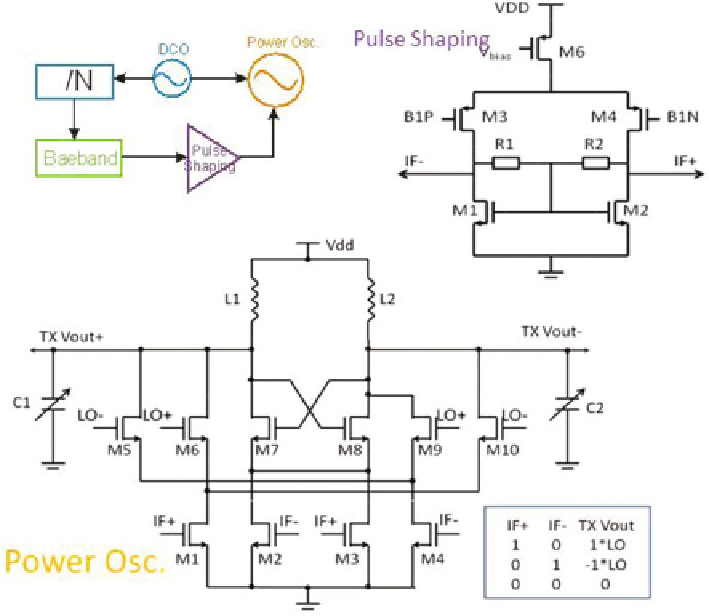Biomedical Engineering Reference
In-Depth Information
Fig. 10
An injection-locked transmitter with OOK modulation
modulation is realized by swapping the output phase of the transmitter as compared
to the LO signals. OOK and position modulation are implemented by turning on/off
the power oscillator. In order to keep injection locking effective within such a large
tuning frequency (6-10 GHz), a low quality factor inductor is implemented in the
power oscillator. The downside is that the output power and power efficiency are
reduced to a certain extent.
As compared to the conventional transmitter architecture in [
13
], the power-
oscillator-based transmitter requires less DCO driving capability, thus relaxing the
requirement and power consumption of the LO distribution system.
The stand-alone transmitter is evaluated and the measurement results are sum-
marized in Fig.
11
. The transmitter data rate is scalable from 0.11 to 27.2 Mbps
and both Burst Position Modulation (BPM) and Burst Phase Shift Keying (BPSK)
are supported. The transmitted pulse and the baseband data B0/B1 are captured in
Fig.
11
a. Bit B0 indicates if there is a burst transmitted or not, while Bit B1 indicates
the polarity of the pulses in the burst. As can be seen, first the RF output appears
where B0 is “1”, second, the polarity of the RF output alternates according to the
Bit B1. Figure
11
b shows the transmitter output spectrum when transmitting a 15.4a
packet and the compliancy with the 15.4a spectrum mask.

Search WWH ::

Custom Search